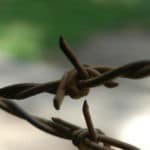A cruise ship guard recently shot and killed a polar bear. Did the bear get too close, or the tourists?
I don’t usually dig myself into holes that I can’t climb out of. I like strong arguments and clear answers – but there’s only one answer here and, sadly, it’s one I don’t like.
Let me start at the start: on 28th July, a cruise ship guard shot a polar bear in Svalbard, an Arctic archipelago that lies between Norway’s mainland and the North Pole.
The guard and three colleagues, all armed, landed at Spitsbergen from the MS Bremen, operated by Hapag-Lloyd Cruises, to make sure the area was safe before allowing tourists to come ashore. During the check, one of the guards was attacked by a polar bear. The man suffered non-life-threatening head injuries and is said to be in stable condition. The polar bear is dead.
Svalbard, a place of dramatic glaciers, vast ice fields and raw, elemental beauty, is one of Europe’s last great wildernesses – but climate change is advancing quickly in the Arctic. Global sea ice was at the lowest level ever recorded last year. Polar bears hunt for seal from sea ice and shrinking levels have forced them to spend more time on land and to hunt over greater distances.
Svalbard has accordingly become a honeypot for tourists seeking an extreme wildlife experience. A port schedule shows that 18 cruise ships would be docking in Svalbard’s main settlement, Longyearbyen, this week. Clearly, seeing a polar bear in the wild has become de rigueur for ‘extinction tourists’, those visiting people, places and wildlife that may soon disappear.

News of the slain polar bear angered and saddened me. Humans encroached on the bear’s territory entirely for leisure and then killed it for following its natural instincts. As TV personality Ricky Gervais put it, “Let’s get too close to a polar bear in its natural environment and then kill it if it gets too close”. The episode was utterly tragic.
Another reason it jarred so much is because those tourists could have been me and Peter. In fact, the only reason we’ve been to Tromso is because it was the wrong time of year to visit Svalbard. Seeing a polar bear in the wild is the stuff of dreams and documentaries. Every adventure traveller wants to see these magnificent creatures in their natural environment; to witness their grace and agility; to be awed by their size and strength; and, of course, to photograph them in the wild.

Tellingly, any old snap won’t do. It has to be a money shot, says John, a tour guide based at the popular viewing station of Churchill in Canada: “Bears who have been foraging in the bone pile or rolling in the dirt have grimy, matted fur, but tourists don’t want to photograph that,” he tells me. “They want a mamma and her cub, or two cubs playing, or a bear looking directly at the lens. Some clients have asked us to get the bear to stand up on two feet and they’re not always joking.”
Churchill sells itself as ‘the polar bear capital of the world’, but rather than a remote hinterland of striking beauty, I’m told it’s a place where giant Humvees truck in 50 passengers at a time, helicopters buzz overhead on sightseeing tours, and a mobile lodge parks on the bears’ turf, attracting them with food smells that waft from the windows. If left unchecked, Svalbard could be headed in the same direction.
Extinction tourism: where to draw the line
Where do we draw the line with vulnerable destinations? This question has occupied us in the past, particularly in relation to Everest which Peter wants to climb one day, the Galápagos which we have visited and, most recently, the Great Barrier Reef. We have examined landscapes affected by climate change, highlighted the cost of human activity and made the case for tourism caps.
Throughout it all, we have maintained that you should be able to visit vulnerable places as long as you do so in a sustainable way – but there has to be a line. It’s true that the vast majority of polar bear viewing tourists do so without incident, but the incidents that do happen are a function of the ones that don’t. All visitors feed into the culture of extinction tourism and heighten the possibility of accident or incident.

It’s extremely important then that ethical guidelines are stringently upheld, but this is not always the case, says John: “You can choose an ethical operator, but there’s always one that will break the rules,” he says. “Tourists will then choose them because their TripAdvisor [reviewers] say they saw bears up close when others say they didn’t.”
Regulation, fines, and the confiscation of licenses and equipment are not deterrent enough, says John: “Some operators feed bears from the back of the boat. Some get closer than the minimum distance, which stresses the bears and puts tourists in danger.”
And so we come to the hole into which I’ve dug myself because I can’t see a way out of this. I want to see Canada and more of Norway. I want to sail across the Arctic and I want to see polar bears in the wild. But, with the above in mind, how can I justify a trip?
My best answer is that I vow not to go on a trip like this unless I can be certain that the operator is ethical. This means examining company data to ensure there is no greenwashing, scouring reviews for any flouting of the rules, and paying extra if I have to. It’s an imperfect answer but, given my dilemma, it’s the only one that I can give.
Enjoyed this post? pin it for later…
The Sixth Extinction is likely to be mankind’s most lasting legacy. Elizabeth Kolbert’s urgent, humbling and deeply necessary book compels us to rethink the fundamental question of what it means to be human.











